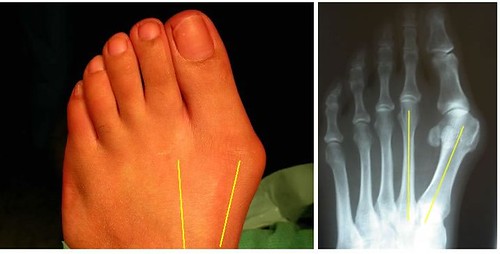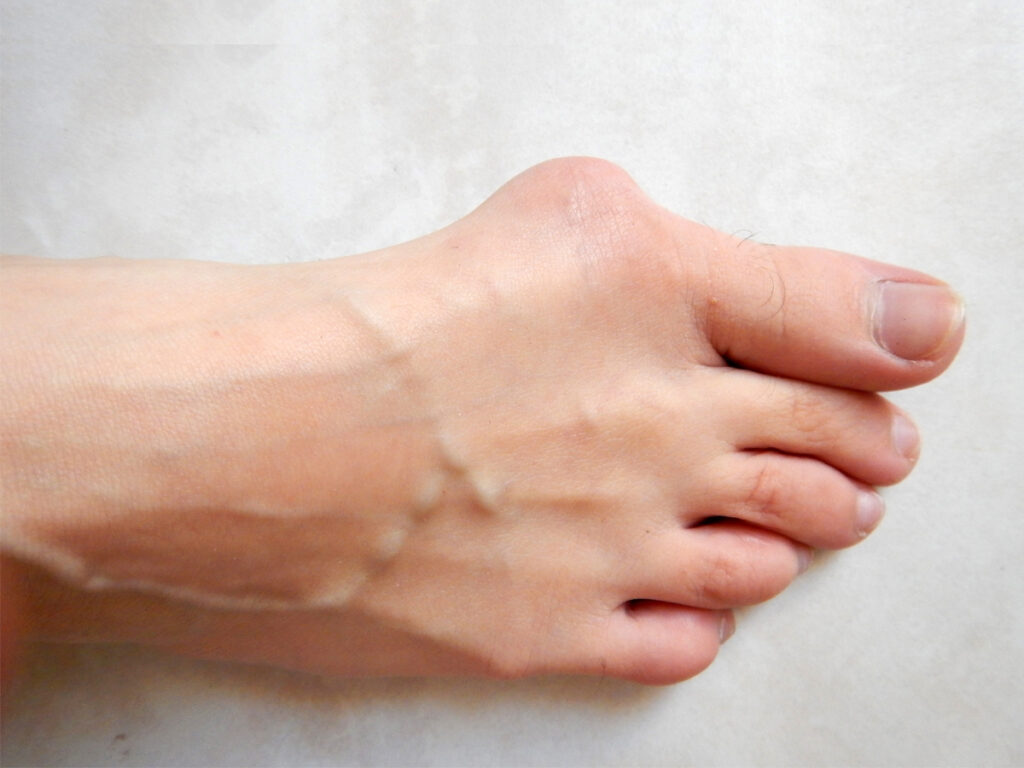Bunions, also known as hallux valgus, are a common foot condition that affects millions of people worldwide. This deformity occurs when the big toe begins to angle toward the second toe, causing a bony bump to form on the side of the foot. While bunions may seem like a minor issue at first, they can lead to significant discomfort and even affect mobility if left untreated. In this article, we will explore the causes, symptoms, and treatment options for bunions in detail.

What Are Bunions?
A bunion is a bony prominence that develops at the base of the big toe. It occurs when the joint connecting the big toe to the foot becomes misaligned. Over time, this misalignment causes the big toe to drift inward, while the bone on the side of the foot protrudes outward. The result is a visible bump that can cause pain, swelling, and difficulty wearing certain types of footwear.
Common Characteristics of Bunions
- A noticeable bump on the side of the foot near the base of the big toe
- Pain or tenderness around the affected area
- Redness and inflammation
- Stiffness or limited movement of the big toe
- Corns or calluses where the toes rub against each other
Causes of Bunions
While the exact cause of bunions is not always clear, several factors can contribute to their development. Understanding these causes can help individuals take preventive measures to reduce their risk.
Genetic Predisposition
One of the most significant factors in the development of bunions is genetics. People who inherit certain foot structures, such as flat feet or loose ligaments, are more prone to developing bunions. If your family members have bunions, you may be at a higher risk of experiencing the same condition.
Footwear Choices
Tight, narrow, or high-heeled shoes can force the toes into unnatural positions, increasing pressure on the big toe joint. Over time, this pressure can lead to the formation of bunions. While footwear alone does not cause bunions, it can exacerbate an existing predisposition or accelerate the progression of the deformity.
Foot Stress and Injury
Repetitive stress on the feet, such as standing for long periods or participating in high-impact activities, can contribute to the development of bunions. Additionally, injuries to the foot, such as fractures or sprains, may alter the alignment of the bones and joints, leading to bunion formation.
Medical Conditions
Certain medical conditions, such as arthritis, can increase the likelihood of developing bunions. Arthritis can weaken the joints and ligaments in the foot, making them more susceptible to deformities. Neuromuscular disorders and inflammatory conditions may also play a role in bunion development.
Symptoms of Bunions
The symptoms of bunions can vary depending on the severity of the condition. Some individuals may experience mild discomfort, while others may face significant pain and functional limitations.
Early Signs
In the early stages, bunions may present as a small bump on the side of the foot. Individuals might notice slight discomfort or redness around the area, especially after wearing tight shoes. At this stage, the big toe may begin to angle slightly toward the second toe.
Progression of Symptoms
As the bunion progresses, the symptoms can become more pronounced. These may include:
- Increased pain and tenderness around the joint
- Swelling and inflammation
- Difficulty finding comfortable footwear
- Development of corns or calluses due to friction between the toes
- Reduced range of motion in the big toe
Impact on Daily Life
Bunions can significantly affect an individual’s quality of life. Walking, standing, or engaging in physical activities may become painful. In severe cases, the deformity can interfere with balance and posture, leading to additional health issues.
Treatment Options for Bunions
Fortunately, there are several treatment options available for bunions, ranging from conservative measures to surgical interventions. The choice of treatment depends on the severity of the condition and the impact it has on the individual’s daily life.
Non-Surgical Treatments
For mild to moderate bunions, non-surgical treatments are often effective in relieving symptoms and preventing further progression.
Footwear Modifications
Wearing properly fitting shoes is one of the simplest and most effective ways to manage bunions. Shoes with a wide toe box can reduce pressure on the big toe joint and prevent irritation. Avoiding high heels and pointed-toe shoes is also recommended.
Padding and Orthotics
Using bunion pads or cushions can help protect the affected area from friction and pressure. Custom orthotic devices, such as arch supports or toe spacers, can realign the foot and reduce strain on the big toe joint.
Medications
Over-the-counter pain relievers, such as ibuprofen or acetaminophen, can help alleviate pain and reduce inflammation. In some cases, a doctor may prescribe stronger medications or recommend corticosteroid injections to address severe symptoms.
Physical Therapy
Physical therapy exercises can strengthen the muscles and ligaments in the foot, improving stability and reducing the risk of further deformity. Stretching exercises for the toes and feet may also enhance flexibility and relieve discomfort.
Surgical Treatments
If non-surgical treatments fail to provide relief, or if the bunion is severe, surgery may be necessary. There are several surgical procedures available, each designed to correct the deformity and restore normal foot function.
Bunionectomy
A bunionectomy involves removing the bony prominence and realigning the big toe joint. This procedure is typically recommended for individuals with moderate to severe bunions that cause significant pain or interfere with daily activities.
Osteotomy
An osteotomy involves cutting and repositioning the bones in the foot to correct the alignment of the big toe. Screws, plates, or wires may be used to hold the bones in place during the healing process.
Arthrodesis
Arthrodesis is a procedure that fuses the affected joint to eliminate pain and improve stability. This option is often reserved for individuals with severe arthritis or recurrent bunions.
Minimally Invasive Surgery
Advances in surgical techniques have led to the development of minimally invasive procedures for bunion correction. These surgeries involve smaller incisions and faster recovery times compared to traditional methods.
Post-Surgical Care
After surgery, patients typically need to wear a protective boot or cast to immobilize the foot during the healing process. Physical therapy may be recommended to restore strength and flexibility. It is important to follow the surgeon’s instructions carefully to ensure a successful recovery.
Preventing Bunions
While not all bunions can be prevented, certain measures can reduce the risk of developing this condition or slow its progression.
Choose Proper Footwear
Selecting shoes with a wide toe box and low heels can help maintain proper foot alignment. Avoid shoes that squeeze the toes together or place excessive pressure on the big toe joint.
Maintain a Healthy Weight
Excess weight can increase stress on the feet, contributing to the development of bunions. Maintaining a healthy weight through diet and exercise can reduce this risk.
Practice Good Foot Care
Regularly inspecting the feet for signs of irritation or deformity can help detect bunions early. Addressing minor issues promptly can prevent them from worsening over time.
Seek Professional Advice
If you notice any changes in the shape or function of your feet, consult a podiatrist or foot specialist. Early intervention can often prevent the need for more invasive treatments in the future.





